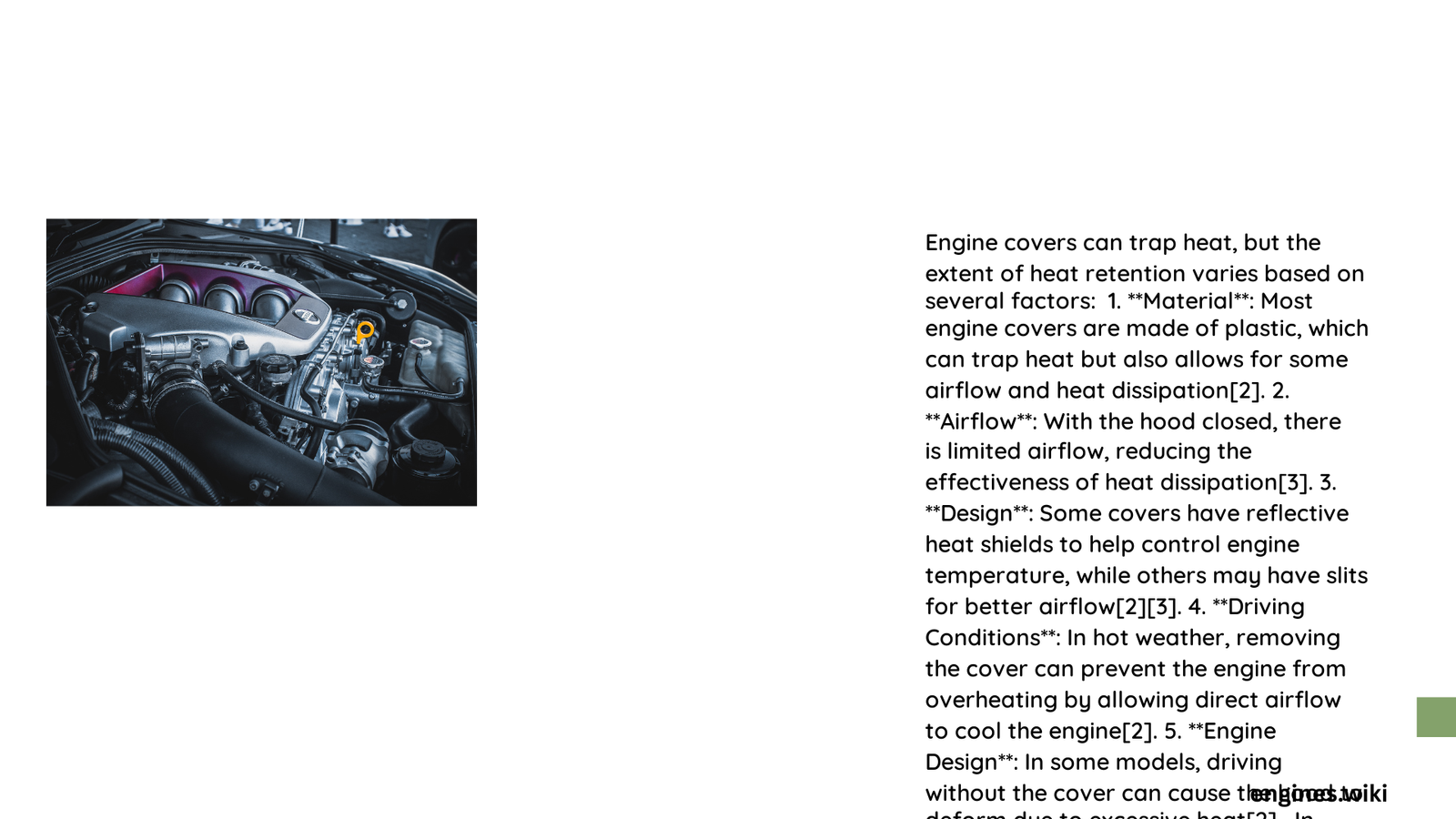Engine covers play a complex role in heat management, potentially trapping heat within the engine bay. While designed to protect and insulate, these components can significantly influence engine temperature, affecting performance, efficiency, and long-term mechanical health. Understanding their thermal characteristics is crucial for vehicle owners and automotive enthusiasts seeking optimal engine performance.
What Happens When Engine Covers Retain Heat?
Engine covers are not simply passive components but active participants in thermal dynamics. Their heat-trapping potential depends on multiple factors:
Material Composition and Heat Retention
| Material Type | Thermal Conductivity | Heat Retention Potential |
|---|---|---|
| Plastic | Low (0.1-0.5 W/m·K) | High |
| Aluminum | High (237 W/m·K) | Low |
| Composite | Variable | Moderate |
Key Thermal Impact Factors
- Temperature Range: Most engines operate optimally between 190°F and 220°F
- Performance Metrics: Excessive heat can cause:
- Premature air-fuel mixture detonation
- Reduced horsepower
- Increased fuel consumption
- Potential engine component damage
How Do Design Features Influence Heat Trapping?
Engine covers incorporate various design strategies to manage thermal dynamics:
- Airflow Considerations
- Vented designs promote heat dissipation
- Perforated surfaces enhance thermal regulation
-
Strategic ventilation prevents excessive heat accumulation
-
Insulation Technologies
- Ceramic coatings reduce heat transfer
- Fiberglass insulation layers manage thermal properties
- Advanced composite materials optimize temperature control
Can Heat Trapping Affect Long-Term Engine Health?
Prolonged heat retention can lead to significant mechanical challenges:
- Accelerated Component Wear
- Gasket degradation
- Cylinder head warping
-
Increased friction between moving parts
-
Performance Degradation
- Reduced engine efficiency
- Potential power loss
- Higher risk of mechanical failures
Strategies to Mitigate Excessive Heat Trapping
- Regular Maintenance
- Inspect engine cover condition
- Check for proper ventilation
-
Replace damaged or worn covers
-
Aftermarket Solutions
- High-performance thermal management covers
- Advanced heat-dissipating materials
- Custom ventilation modifications
Technical Insights and Recommendations

While engine covers can trap heat, their impact varies based on:
– Vehicle make and model
– Driving conditions
– Maintenance practices
– Cover material and design
Expert Recommendations
- Prioritize covers with balanced thermal properties
- Ensure proper engine bay ventilation
- Monitor engine temperature regularly
- Consider professional thermal management assessments
Conclusion
Engine covers are sophisticated components that require nuanced understanding. Their heat-trapping potential is not inherently negative but depends on design, material, and application.
References:
– Thermal Management in Automotive Engineering
– Engine Cover Design Principles
– Heat Dissipation Techniques
